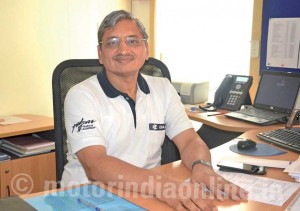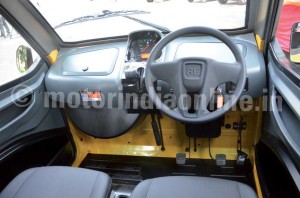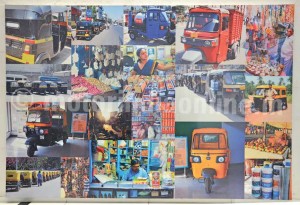RE60 all set to become India’s first quadricycle

Bajaj Auto Ltd., the flagship of the Bajaj Group, is the world’s largest manufacturer of three-wheelers and a leading producer of two-wheelers in India. An outright market leader in the petrol three-wheeler passenger-carrier segment, Bajaj is coming up with new diesel vehicles in the next few months to expand its presence in the diesel space. It is also foraying into the four-wheeler segment with the country’s first quadricycle, the RE60 (project code). Mr. R.C. Maheshwari, President, Commercial Vehicle Business, Bajaj Auto Ltd., outlines the company plans in an exclusive interaction with Motorindia.
In the three-wheeler segment, 82 per cent of Bajaj vehicles are in the passenger-carrier segment, while the remaining 18 per cent run as cargo-carriers. Within the passenger vehicle space, the company offers both petrol and diesel variants, with a whopping 88 per cent market share in the former despite stiff competition from other players. “We have been following a strategy of defence where we don’t allow our competitors to differentiate themselves with respect to product, channel and financial packages, etc. We have tried to block them all over a period of time, so we are able to remain true to our brand values and maintain a market share of about 88% in the segment”, says Mr. Maheshwari.
When it comes to diesel passenger vehicles which account for two-thirds of the passenger-carrier segment, Bajaj has improved its market share from around 24 per cent over two years ago to 28 per cent last year and an even better mark of 31 per cent in the current year. Overall, in the three-wheeler category, the company grew by nearly 14 per cent last year with the market share growing from 48 per cent to 51 per cent.

First Indian quadricycle
Bajaj first unveiled the RE60 at Auto Expo 2012 in Delhi where the vehicle was a major attraction. The first quadricycle in India, the RE60 has high fuel efficiency of 35 km/l and scores over the three-wheeler range owing to its low CO2 emissions. Mr. Maheshwari says: “The RE60 is a product which is more suited for mobility. It overcomes the disadvantages of a three-wheeler and, at the same time, it brings with it the advantages offered by a car.”
With a fare meter included in the dash board, the company is targeting auto-rickshaw drivers by offering a four-wheeler as economical to run as a three-wheeler, but much safer and comfortable. With the Government likely to allow free running of quadricycles on Indian roads, Bajaj certainly has a first-mover advantage over competition.

New launches
Bajaj is also contemplating some interesting new launches in the near future. The company has done extensive study on the kind of vehicles which would suit the customer requirements and also be ideal under Indian conditions. It is working on increasing the replacement cycle of vehicles by developing more reliable and long-lasting products which would give value for money and a better overall package for its customers.
“We will be launching two-stroke and four-stroke vehicles which will be economically superior. The new products will come with the technology that is currently available on our motorcycles; so obviously they will be very fuel efficient. From the durability point of view also, these products will be far better than the existing ones in the market”, he adds.
In the diesel passenger vehicle segment, the market is witnessing a gradual shift from bigger to smaller vehicles. With an eye on the changing trend, Bajaj is coming out with a ‘medium-sized’ product which is more fuel efficient than the bigger vehicles and at the same time can carry more people than the smaller ones. The company expects demand for such new segment products to go up by almost 20 per cent and consequently result in strong sales for the relevant new models.

By the end of 2014, Bajaj will put out a new small diesel vehicle, a mid-sized platform diesel vehicle, and another large vehicle. With these new launches, the company is gearing up to fight for the top spot in the diesel passenger carrier space, to add to its leadership status in the petrol domain. While its major focus is on the passenger carrier segment, the company plans to continue with its existing range of products for the cargo-carrier space.
Bajaj has a capacity of manufacturing 52,000 three-wheelers per month at its Aurangabad plant and caters to both domestic and export markets from the facility, with the latter contributing to 55 per cent of its sales and the former accounting for the remaining 45 per cent. Its key export markets include Sri Lanka, Bangladesh, Egypt and Peru with a well-spread sales and service network across the countries.
With exports exceeding domestic sales, Bajaj has an impressive market share of 64 per cent in the three-wheeler segment globally, which is a truly laudable effort by the Indian powerhouse.